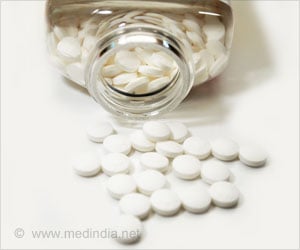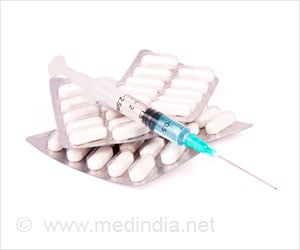
‘Digital pill provides a direct measure of opioid ingestion and changes in medication-taking behavior.’
Tweet it Now
In a paper published in Anesthesia & Analgesia, BWH investigators report on the results from a pilot study of 15 individuals who received a prescription to take oxycodone digital pills as needed following treatment for acute fractures. The team found that the opioid-naive patients self-administered opioids to manage pain for only a brief period and only took a fraction of the number of pills they were given.
"As an investigational tool, the digital pill provides a direct measure of opioid ingestion and changes in medication-taking behavior," said senior author Dr.Edward Boyer, of the Division of Medical Toxicology within the BWH Department of Emergency Medicine.
"This technology may also make it possible for physicians to monitor adherence, identify escalating opioid use patterns that may suggest the development of tolerance or addiction and intervene for a specific medical condition or patient population."
The first digital pill was approved by the FDA for use with the antipsychotic drug Abilify, used to treat schizophrenia, bipolar disorder, and depression. Opioids such as oxycodone are frequently prescribed on an as-needed basis for managing acute conditions, but uncertainty exists around how patients take the prescribed drug. Digital pills may offer a unique window into patterns of medication usage.
Advertisement
The team used the eTectRx ID-Cap system. Each pill in the system consists of a unique radiofrequency emitter and a standard gelatin capsule containing an oxycodone tablet. When the capsule dissolves, the medication is released and chloride ions energize the emitter.
Advertisement
The digital pill system recorded a total of 112 ingestion events, compared to 134 ingestions based on pill count (84 percent accuracy). However, all missed ingestion events were traced back to two study participants who ingested digital pills without wearing the reader or did not interact with the reader due to severe pain. Most oxycodone doses were ingested within the first three days after discharge. On average, patients ingested only six pills, despite being given 21.
"It is fascinating to see this technology literally live and in action, especially in light of recent data from the Centers for Disease Control and Prevention about the risk of long-term opioid addiction in patients who have even short courses of oxycodone. These data are important as we continue to have more careful and directed conversations regarding the expectant management of pain, and the dangers associated with opioid use," said corresponding author Peter R. Chai, MD, MMS, of the BWH Division of Medical Toxicology.
"The findings of our pilot study indicate that most patients stopped taking their prescription opioid after only a brief period, even among patients with fractures that required surgical management."
Source-Eurekalert













